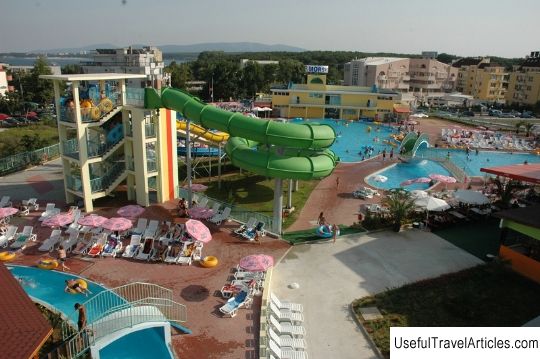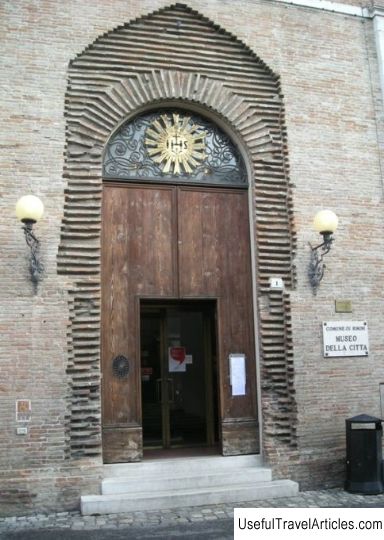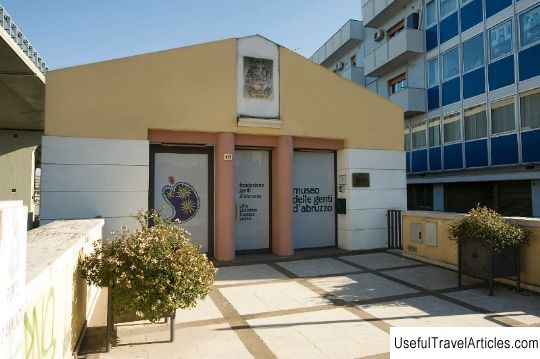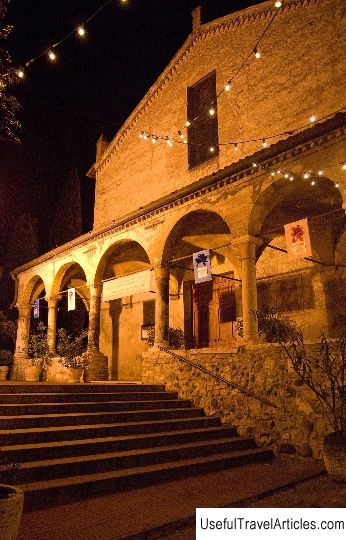Ethnographic Museum (Museo delle Culture Estraeuropee) description and photos - Italy: Rimini
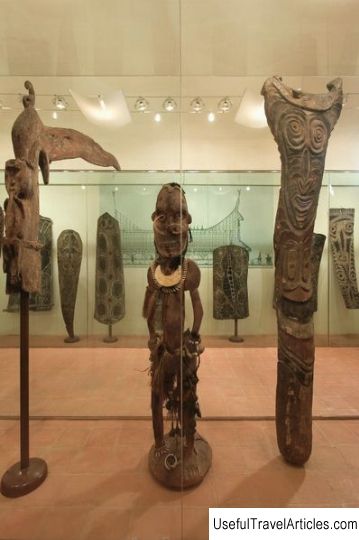
Ethnographic Museum (Museo delle Culture Estraeuropee) description and photos - Italy: Rimini. Detailed information about the attraction. Description, photographs and a map showing the nearest significant objects. The title in English is Museo delle Culture Estraeuropee. Photo and descriptionThe Ethnographic Museum of Rimini, after closing in 2000, reopened its doors to the public, this time in the building of Villa Alvardo in the Covignano area. It is one of the main Italian museums dedicated entirely to the ethnological and archaeological aspects of the diverse peoples of Africa, Oceania, pre-Columbian America and partly Asia. After its reopening in December 2005, the museum received a new name - “Ethnographic collection of Rimini. Museum degli Sguardi ". The initiator of this renaming was the French anthropologist Marc Auget. Today, the museum's collections are housed in an old and very valuable from an architectural point of view building built in 1721 - a villa designed for Giovanni Antonio Alvarado, who was the personal secretary of the Spanish Emperor Charles VI in Italy. The villa has been renovated at the initiative of the municipality of Rimini. Today, it contains about seven thousand artifacts belonging to the museum. Interestingly, the villa used to be part of another museum - Delle Grazie, which since 1928 was located in the Franciscan covered gallery. It contained objects collected by the Franciscan monks during their missions, some of which later became the property of the ethnographic museum. Particularly valuable are the exhibits relating to the history of the tribes of pre-Columbian America, which were scattered throughout the vast American continent before its conquest by the Spaniards in the 16th century. More recently, priceless artifacts from the Amazon basin have also been donated to the museum's collection. Today, it contains about seven thousand artifacts belonging to the museum. Interestingly, the villa used to be part of another museum - Delle Grazie, which since 1928 was located in the Franciscan covered gallery. It contained objects collected by the Franciscan monks during their missions, some of which later became the property of the ethnographic museum. Particularly valuable are the exhibits relating to the history of the tribes of pre-Columbian America, which were scattered throughout the vast American continent before its conquest by the Spaniards in the 16th century. More recently, priceless artifacts from the Amazon basin have also been donated to the museum's collection. Today, it contains about seven thousand artifacts belonging to the museum. Interestingly, the villa used to be part of another museum - Delle Grazie, which since 1928 was located in the Franciscan covered gallery. It contained objects collected by the Franciscan monks during their missions, some of which later became the property of the ethnographic museum. Particularly valuable are the exhibits relating to the history of the tribes of pre-Columbian America, which were scattered throughout the vast American continent before its conquest by the Spaniards in the 16th century. More recently, priceless artifacts from the Amazon basin have also been donated to the museum's collection. It contained objects collected by the Franciscan monks during their missions, some of which later became the property of the ethnographic museum. Particularly valuable are the exhibits relating to the history of the tribes of pre-Columbian America, which were scattered throughout the vast American continent before its conquest by the Spaniards in the 16th century. More recently, priceless artifacts from the Amazon basin have also been donated to the museum's collection. It contained objects collected by the Franciscan monks during their missions, some of which later became the property of the ethnographic museum. Particularly valuable are the exhibits relating to the history of the tribes of pre-Columbian America, which were scattered throughout the vast American continent before its conquest by the Spaniards in the 16th century. More recently, priceless artifacts from the Amazon basin have also been donated to the museum's collection. More recently, priceless artifacts from the Amazon basin have also been donated to the museum's collection. More recently, priceless artifacts from the Amazon basin have also been donated to the museum's collection.     We also recommend reading Church of St. Nicholas the Wonderworker in Zayayitsky description and photos - Russia - Moscow: Moscow Topic: Ethnographic Museum (Museo delle Culture Estraeuropee) description and photos - Italy: Rimini. |
